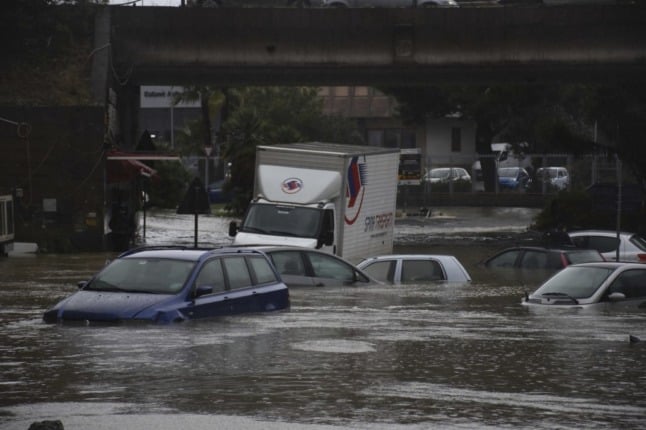While investigating a different assassination attempt, police wiretaps caught members of the Cappello clan, based in Pachino in the deep south of Sicily, discussing plans to murder Paolo Borrometi, editor of anti-mafia investigative website LaSpia.it.
The Cappello boss, Salvatore Giuliano, was first recorded telling his one of his henchmen that Borrometi should be killed in early January, according to the investigating judge's account. Six weeks later, the same henchman was heard to say that the journalist “doesn't have long left”.
“We have to get that one,” Giuseppe Vizzini told one of his sons. “Bang, on the ground.”
READ ALSO: Nearly 200 journalists in Italy are under police protection
In the same conversation, in which he outlined plans for a group of mafiosi to unleash “hell” on Borrometi, Vizzini went on to remark that “you need a body” every so often “to calm everybody down”.
Investigators believe the clan was about to organize a violent attack “to eliminate the troublesome journalist”, the judge wrote.
It's not the first time that the Cappello clan has attempted to intimidate Borrometi, who has been under police protection for the past four years.
In February a judge ordered Guiliano and his son Gabriele to stand trial for repeatedly threatening the journalist, who has already been to court six times over threats related to his work. The first hearing is scheduled for November.
Meanwhile Vizzini and two of his sons, Simone and Andrea, were arrested on Tuesday in connection with a separate car bombing that targeted a lawyer involved in seizing the assets of a bankrupt company run by Vizzini's wife.
Borrometi has met previous threats with defiance. Last month he addressed his attackers on Facebook, telling them: “Against your threats, our smiles! … People's smiles will wipe you out for good.”
As the latest threats became public, several politicians, as well as media outlets and journalist unions, expressed their solidarity.
La mia vicinanza e un abbraccio a @paoloborrometi vittima di nuove minacce di stampo mafioso. Tutti noi dobbiamo molto a chi ogni giorno con coraggio racconta la mafia.
— Andrea Orlando (@AndreaOrlandosp) April 10, 2018
“My support and a hug to Paolo Borrometi, victim once more of mafia threats,” said Justice Minister Andrea Orlando. “We all owe a lot to those who every day bravely report on the mafia.”
Nearly 200 journalists in Italy receive some form of police protection, including 10 who are escorted round the clock.
In February, a reporter in Slovakia was killed along with his partner as he prepared to publish an investigation that alleged high-level ties between members of the Slovak government and the Italian mafia.
Police subsequently arrested several Italian suspects named in his report but released all except one of them, who was arrested on separate drug charges.
READ ALSO: Five ways to fight the Italian mafia




 Please whitelist us to continue reading.
Please whitelist us to continue reading.